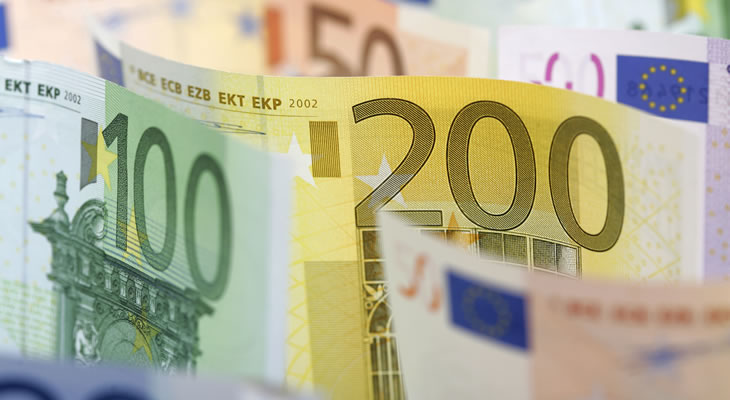- Swift end to Conservative leadership battle boosted Pound – Investors relieved by easing in domestic uncertainty
- Eurogroup meeting failed to offer reassurance over Italian banking sector – Worries over prospect of bailout continued to weigh on Euro
- Bank of England comments helped to extend Pound’s gains – Carney caution failed to dent market confidence
- Forecasts predict BoE rate cut on Thursday – GBP EUR exchange rate expected to slump in response to monetary loosening
Weaker Eurozone Production Failed to Shore up GBP EUR Exchange Rate
Despite some disappointing Eurozone Industrial Production figures the GBP EUR exchange rate returned to a downtrend on Wednesday. This was largely due to a worrying Credit Suisse survey which noted that business confidence had weakened significantly in the wake of the referendum. Investors were also increasingly cautious ahead of tomorrow’s Bank of England (BoE) rate decision. As a result the GBP EUR exchange rate was slumped in the region of 1.1864.
(Previously updated at 14:52 on 12/07/2016)
Markets were in a more positive mood in the wake of news that Theresa May will be the next UK Prime Minister, rather sooner than investors had anticipated, allowing the GBP EUR exchange rate to go on a bullish run.
Premature End to Conservative Leadership Contest Boosted GBP EUR Exchange Rate
While the Pound to Euro (GBP EUR) exchange rate got off to a somewhat muted start to the week, it wasn’t long before political developments prompted greater market volatility. Investors were generally encouraged by the news that Andrea Leadsom was stepping aside in the Conservative leadership race, subsequently leaving Theresa May as the Prime Minister elect. This brought the uncertainty surrounding the UK’s political leadership to a more abrupt end than expected, somewhat easing the anxiety that had been weighing on the Pound in the wake of the EU referendum result.
Confidence in the single currency (EUR), on the other hand, was mixed as the Eurogroup met to discuss issues facing the currency union. Of particular interest to markets were comments made on the situation unfolding in the Italian banking sector. Eurogroup President Jeroen Dijsselbloem reiterated that Eurozone rules need to be followed regarding any aid offered to the banks, despite expressing some optimism that the issue is manageable and not yet a crisis. However, as researchers at BBH noted:
‘The Bank Recovery and Resolution Directive (BRRD) outlines the process of recapitalizing banks with state money. The issue is not whether the state funds can be used, but who must take losses first. In Italy, nearly half of the bank bonds were reportedly sold to retail investors. Bailing them in as investors risks hurting the fragile economy further through consumption.’
Pound (GBP) Extended Uptrend after Easing in Political Uncertainty
Despite a particularly weak BRC Like-For-Like Sales figure, the Pound remained on bullish form on Tuesday morning, with investors still in an optimistic mood now that the new Prime Minister will be in place within days. Once Theresa May is in office, the preparations for the UK’s exit from the EU can begin in earnest, a prospect that has kept markets on a generally positive footing. The fact that May was a ‘Remain’ campaigner has also offered reassurance to markets, raising the likelihood of the UK nevertheless maintaining a close relationship with the EU in spite of its decision to leave.
Comments from Bank of England (BoE) Governor Mark Carney also helped to drive the Pound higher against rivals, in spite of the Governor maintaining a somewhat cautious tone on the outlook of the domestic economy. Carney was not able to speak on monetary policy ahead of Thursday’s meeting, reducing the impact of any signs of dovishness and allowing markets to focus on his more positive comments on financial stability. As a result the GBP EUR exchange rate extended its bullish run, climbing to a weekly best of 1.1876.
With Eurozone finance ministers meeting once again, alongside representatives from the rest of the EU, demand for the common currency remained generally weakened, particularly as the latest domestic data did little to ease concerns over the outlook of the currency union. While German inflationary pressure remained fragile in June there was also a concerning development in the Irish first quarter GDP results, which indicated an unexpected -2.1% contraction in growth on the quarter.
GBP EUR Exchange Rate Forecast: Pound Weakness Expected Ahead of BoE Policy Decision
The recent strength of the Pound is unlikely to last throughout the week, however, as the BoE is expected to lower interest rates at its first post-Brexit policy meeting. Any loosening of monetary policy would drive investors away from Sterling, substantially reducing the appeal of the embattled currency. As Lee Hardman, Currency Analyst at MUFG, noted:
‘We expect the BoE to deliver at least a 0.25 percentage point reduction in their key policy rate at this week’s meeting and to signal that more easing is likely when they meet again in August. By then the BoE will have had more time to assess the initial impact of the Brexit vote and update their outlook for the UK economy in their latest Quarterly Inflation Report. The weak performance of the UK economy and expectations of looser monetary policy from the BoE should keep the pound under downward pressure in the coming months.’
With only limited Eurozone data set for release this week the Euro may struggle to make particular headwinds against its rivals. If the latest US data proves disappointing, driving down the ‘Greenback’ (USD), the single currency could receive a boost. Nevertheless, any signs of weakness within the currency union are likely to weigh particularly heavily on investor sentiment over the coming week.
Current GBP, EUR Exchange Rates
At the time of writing, the Pound to Euro (GBP EUR) exchange rate was trending bullishly at 1.1847, while the Euro to Pound (EUR/GBP) pairing was slumped around 0.8442.


Comments are closed.